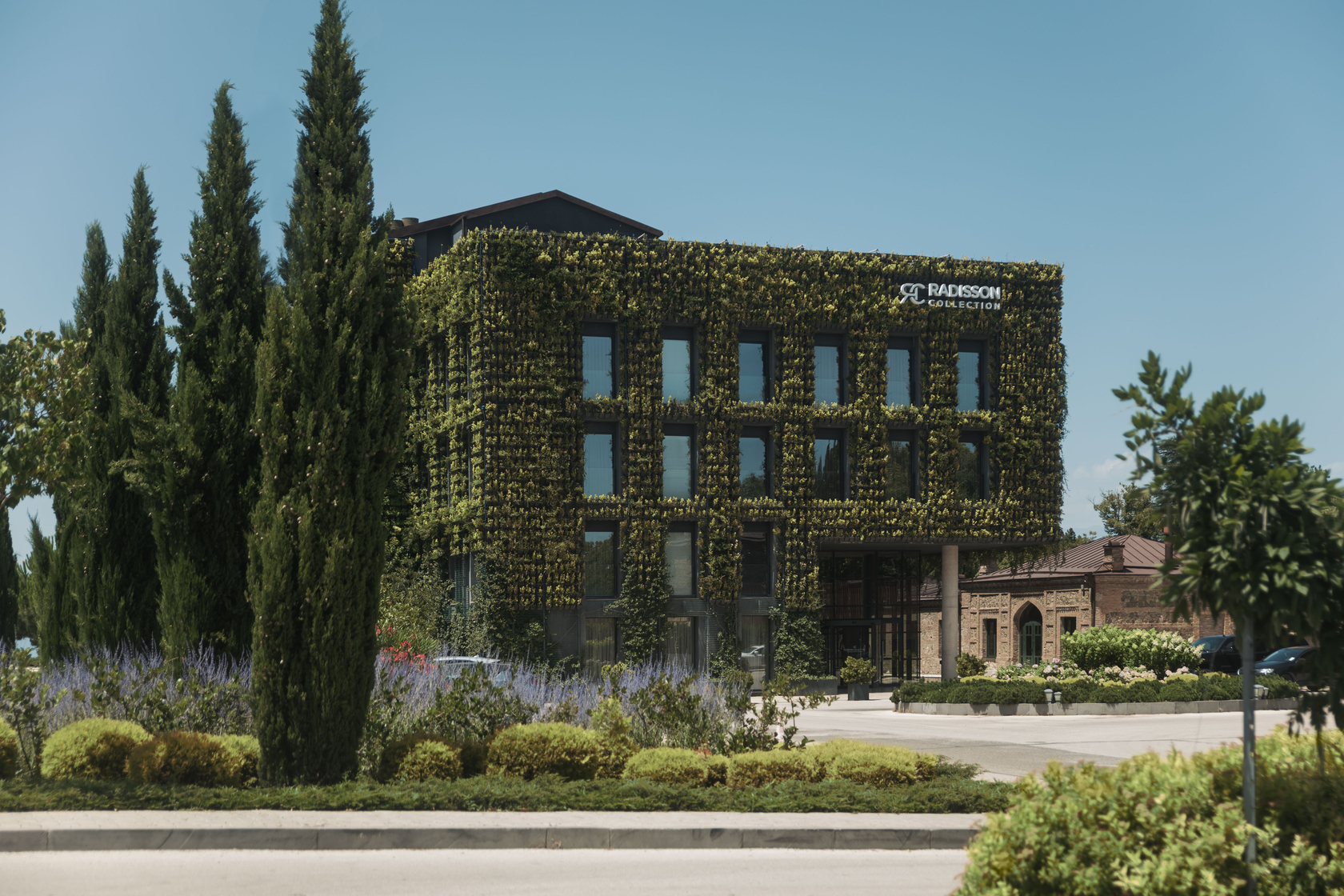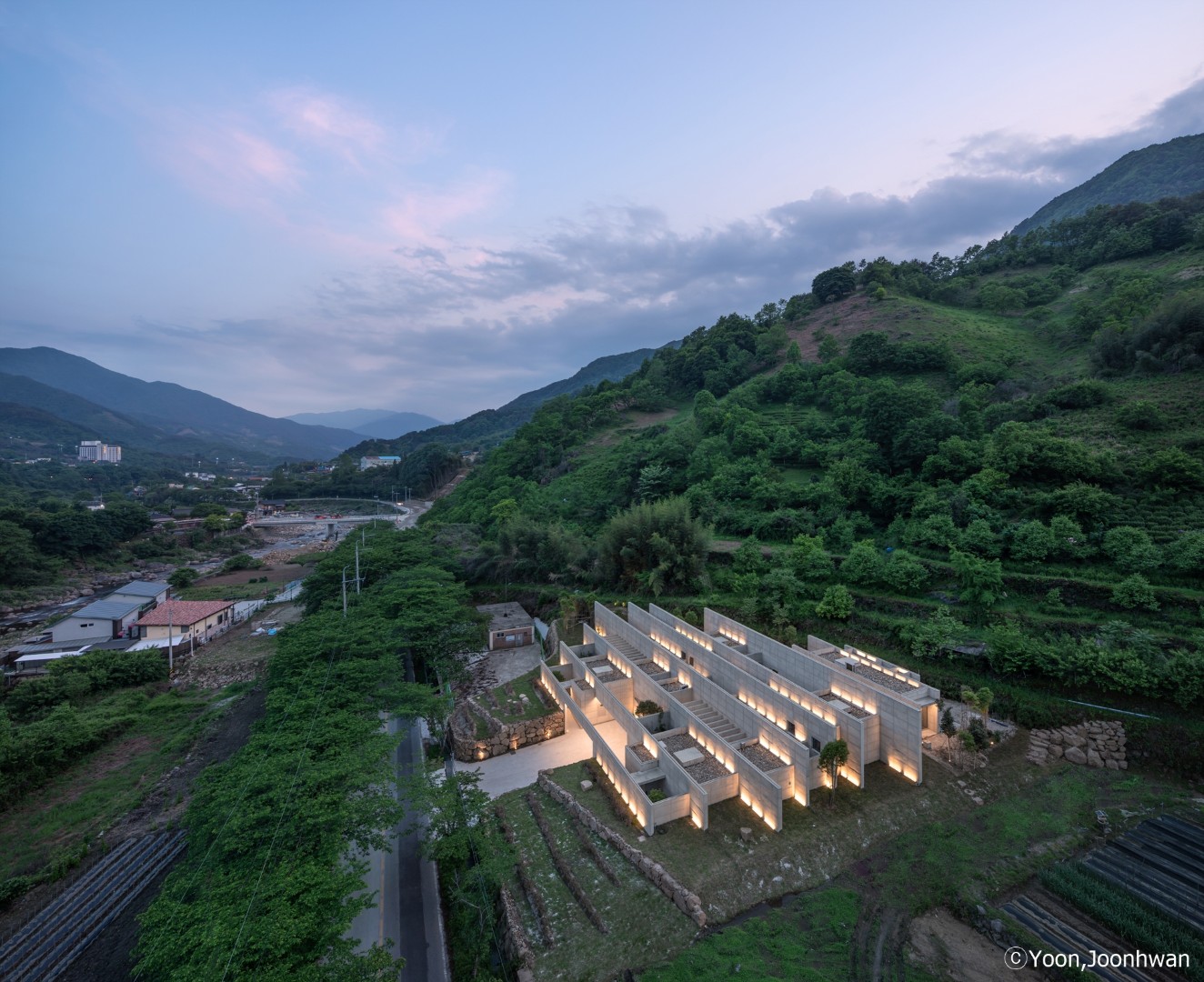Header: Courtesy of Radisson Collection
The arrival of the Radisson Collection hotel in Tsinandali did more than just open doors to a new luxury destination; it completely altered the course of tourism in Georgia’s Kakheti region. As one of the first major hotels of its kind in the area, it spurred economic growth and encouraged other international hospitality groups to see the potential of this historic wine country.
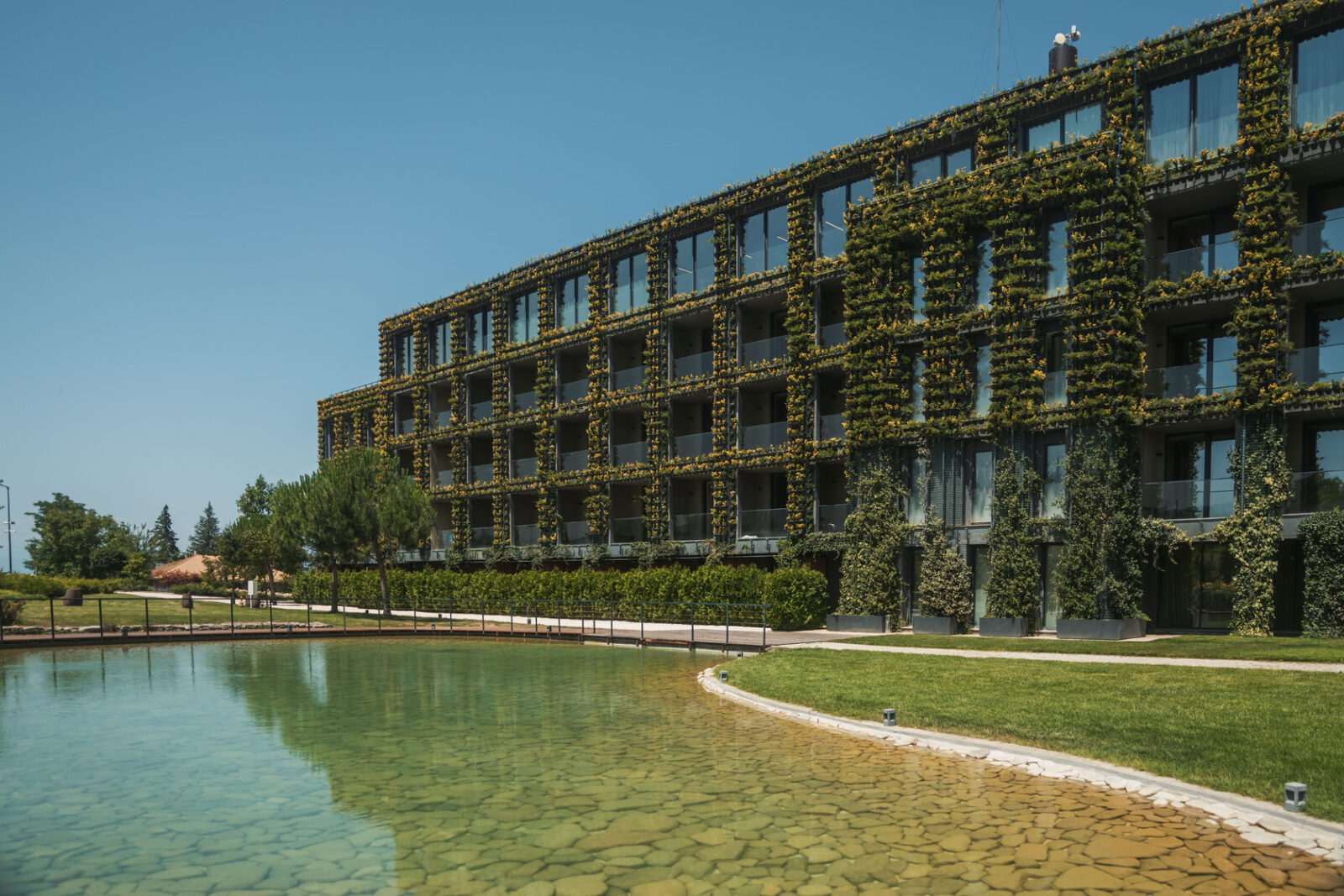
A place steeped in history
Tsinandali is not merely a location; it’s a cornerstone of Georgian identity. The grounds were the estate of the noble Chavchavadze family, who were cultural and political leaders in the 18th and 19th centuries. Alexander Chavchavadze, a key figure in Georgian Romanticism, made the estate a center of intellectual life. Long before the hotel was conceived, the property was already a popular museum, drawing visitors to walk through a piece of the nation’s past. Building a modern hotel here required a special approach that acknowledged the deep cultural weight of the land.
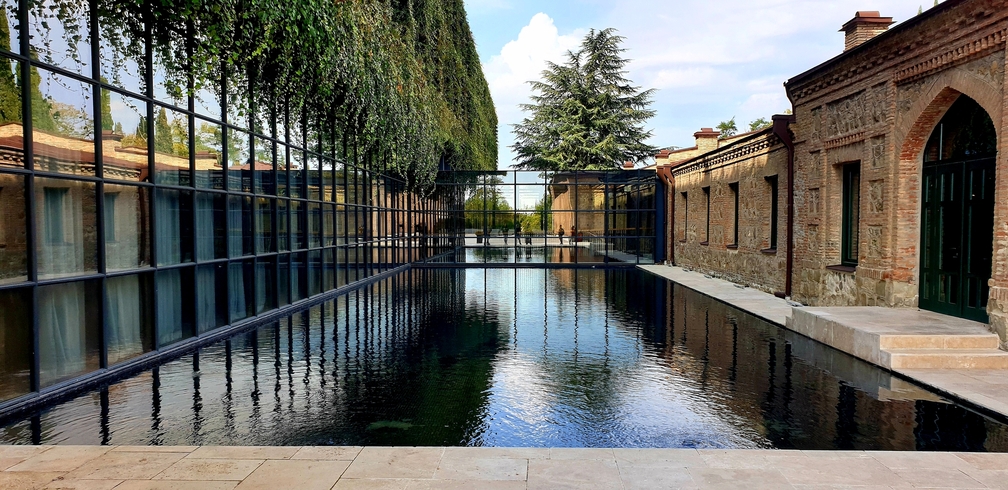
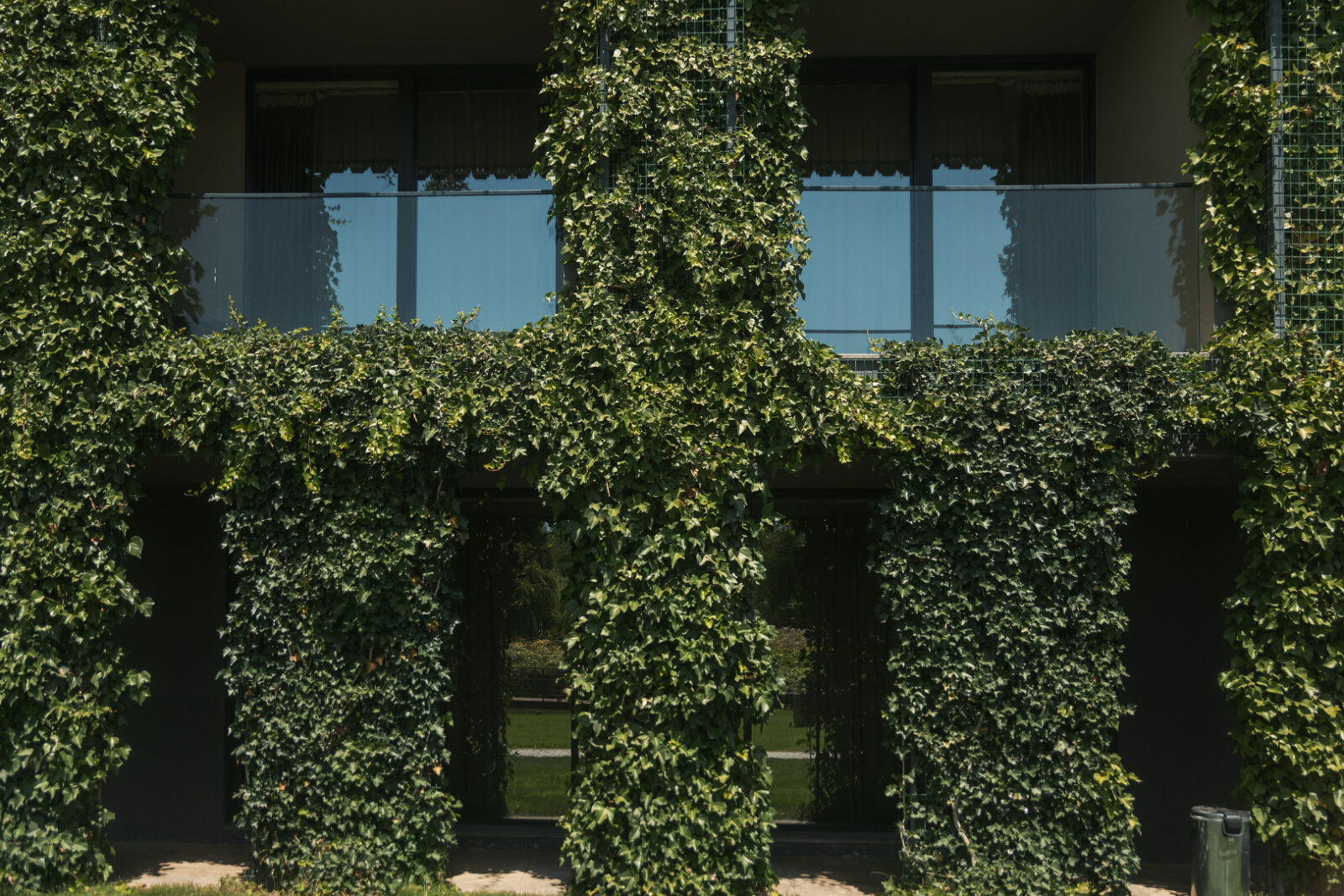
Weaving modernity into a historic fabric
The task of creating the hotel was taken on by architects John Fotyadis, Christina Gabas, and Damien Figueres. They designed a five-star hotel with 124 rooms that provides contemporary comforts while sitting inside a storied atmosphere. The impressive interiors feature works from celebrated industrial designer Ingo Maurer and Georgian sculptor Tamar Kvesitadze, adding layers of artistic detail to the guest experience. The property includes two restaurants, three bars, pools with wide-open views, and sports courts. The entire project, with a total area of 22,000 square meters, was a $35 million investment in creating a world-class destination.
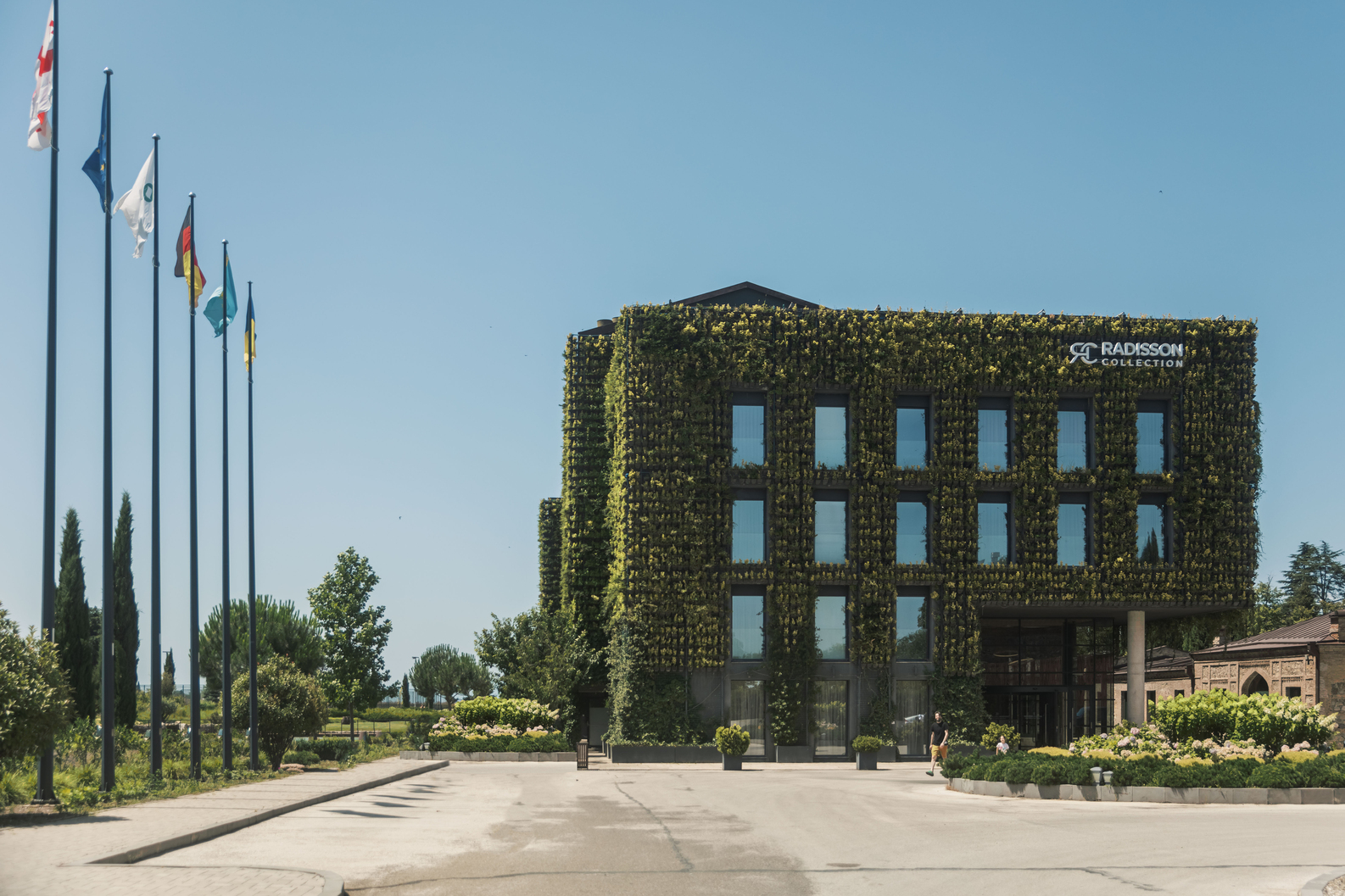
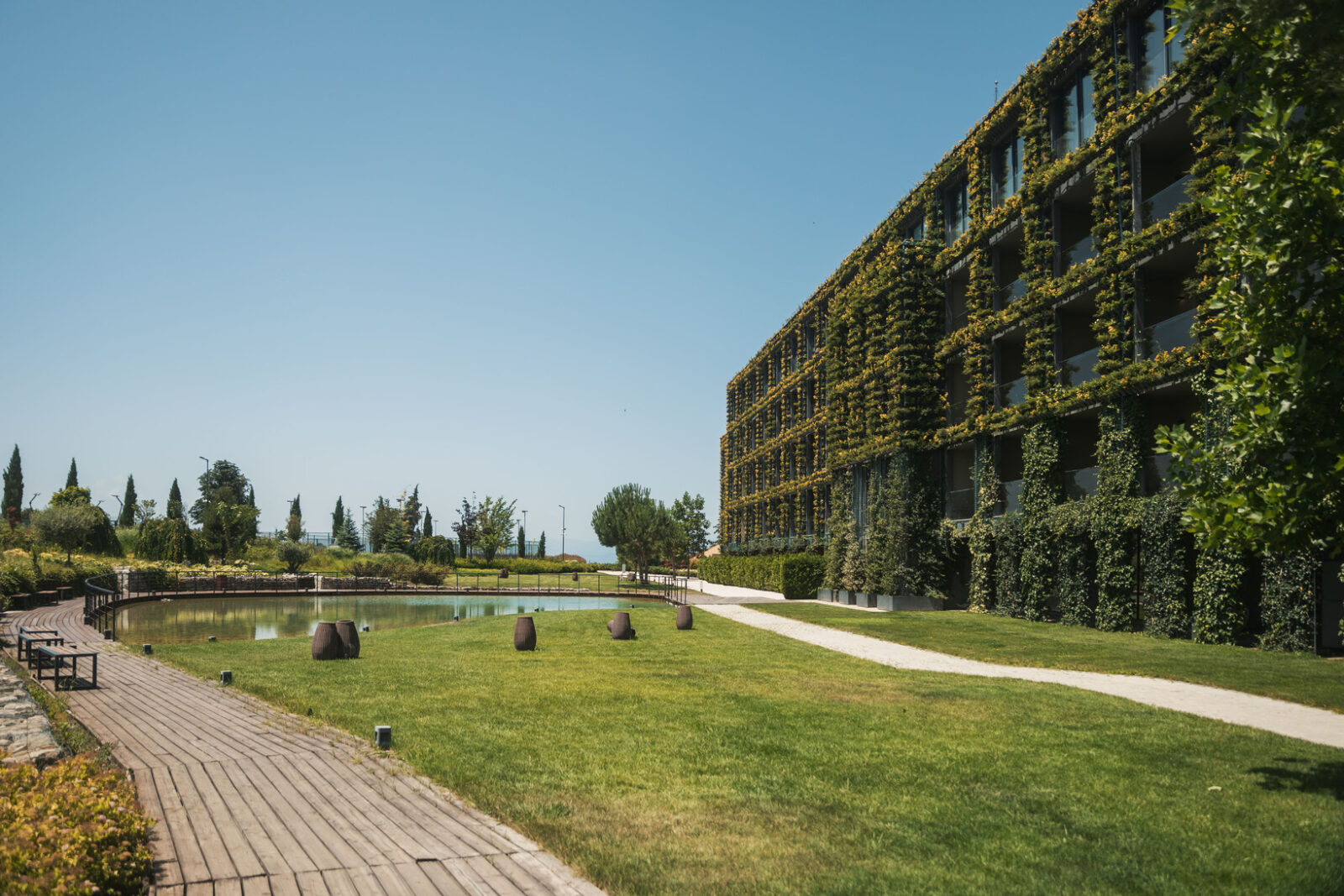
The living wall: Spectrum Architecture’s green innovation
A defining feature of the hotel is its green facade, a concept brought to life by Spectrum Architecture. Because the historical estate was already surrounded by lush nature, the architects decided to extend that greenery directly onto the building, covering it with a layer of plants. This marked the first time green architecture was applied to a building in Georgia.
The carefully selected plant species do more than just give the building a lush, natural appearance; they also support local biodiversity and help clean the air by absorbing pollutants. This living skin acts as a natural insulator, shielding the building from intense summer heat, which in turn reduces the need for air conditioning and lowers energy use.
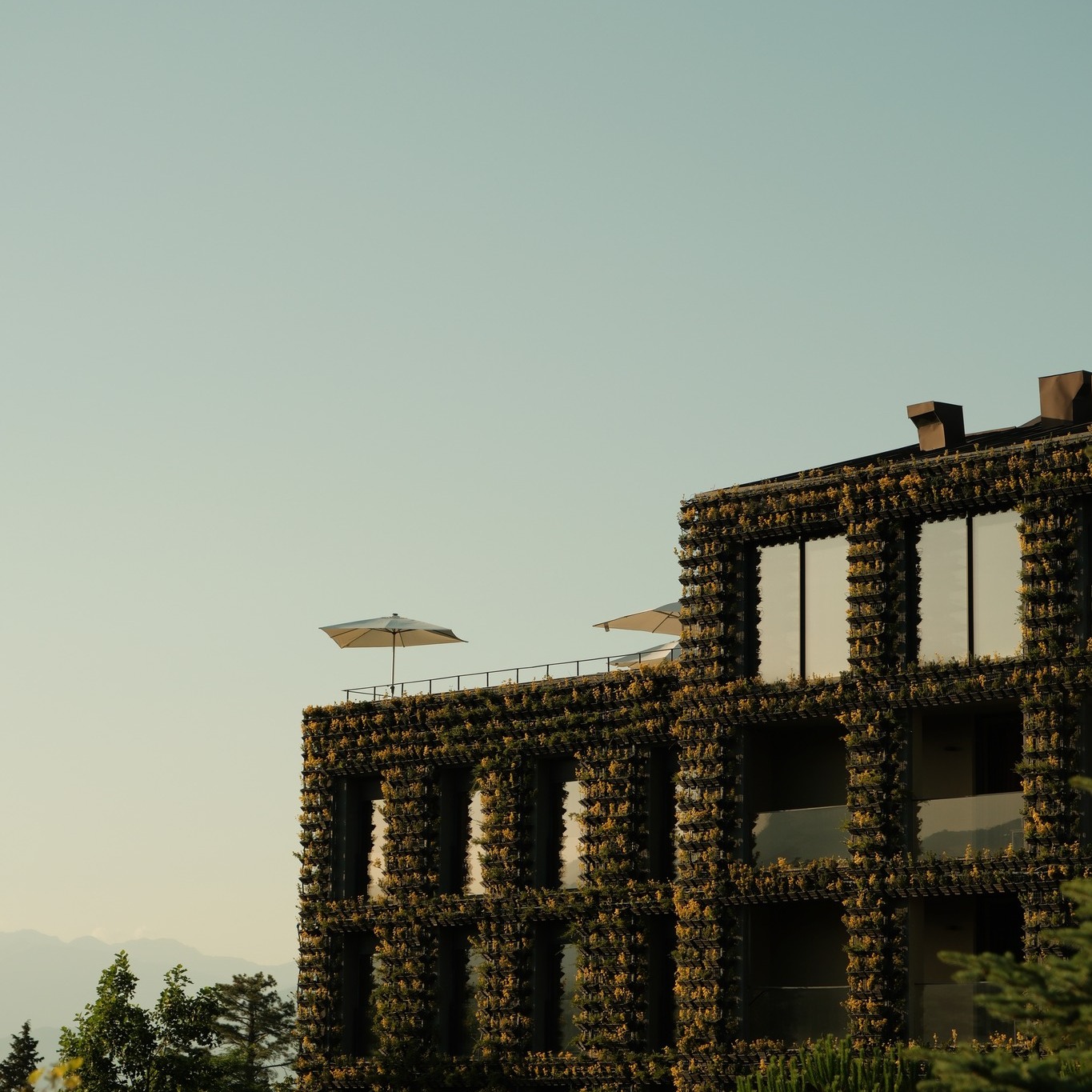
Overcoming new design hurdles
Over a decade ago when the project began, creating such a large-scale green exterior was completely new for Georgia. There was no established method to follow. The team at Spectrum developed clever solutions to make the green wall a reality. Instead of one massive structure, they engineered a system of individual panels. This made the installation process manageable and greatly reduced future maintenance costs. If a section of the ivy is ever damaged, only that single panel needs to be replaced, not the entire wall. Keeping the thousands of plants watered was another challenge. Each plant sits in its own pot, requiring specific care. An automated irrigation system was created to deliver the precise amount of water needed for each pot. A special drainage system was also integrated into the façade to collect any excess water, preventing spills and waste.
More than a hotel: A cultural hub
The vision for the Tsinandali Estate extended beyond hospitality. Next to the hotel, on the site of an old winery, stands a 1,000-seat open-air amphitheater and a 600-seat indoor concert hall. These venues host the Tsinandali Festival of classical music, along with concerts, theater performances, and other large-scale events. This addition has transformed the estate into a prominent cultural center, attracting visitors for arts and entertainment as well as for leisure. The Tsinandali Radisson Collection stands as a project where history, culture, and new ideas meet. By honoring the location’s past and introducing a complex green wall, the development not only changed tourism in Kakheti but also provided a new model for building with sustainability and local context in mind.






